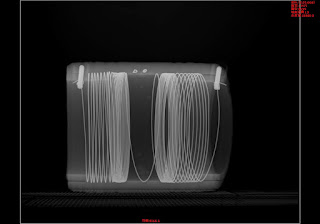Computed Radiography Systems for NDT,Portable Digital Radiography X-ray systems for industry
Non-destructive testing technology does not destroy parts or materials, can be directly tested on site, and is highly efficient. At present, there are five main types of non-destructive testing: Ultrasonic Testing, Radiographic Testing, Magnetic Particle Testing, Penetrant Testing, and Eddy Testing. Current Testing).
Ultrasound is a mechanical wave with a frequency higher than 20 kHz. Frequencies commonly used in ultrasonic testing are 0.5-5 MHz. This kind of mechanical wave can propagate in the material at a certain speed and direction, and a heterogeneous interface (such as a defect or the bottom surface of the object to be tested) that has different acoustic impedance will produce reflection. This reflection phenomenon can be used for ultrasonic flaw detection. The most common one is pulse echo detection. When the pulse is detected, the voltage from the pulse oscillator is applied to the probe (detection element made of piezoelectric ceramic or quartz wafer). The emitted ultrasonic pulse enters and propagates through the acoustic coupling medium (such as oil or water). After the defect is encountered, part of the reflected energy returns to the probe along the original path, and the probe converts it into an electrical pulse, which is displayed by the instrument. On the screen of the oscilloscope. The position and approximate size of the defect can be determined based on the position and amplitude of the reflected wave on the screen (compared to the amplitude of the reflected wave of the artificial defect in the reference block). In addition to the echo method, there is a penetration method that accepts a signal on the other side of the workpiece with another probe. When the physical properties of materials are detected by ultrasonic methods, the characteristics of sound velocity, attenuation, and resonance of ultrasonic waves in the workpiece are often utilized.
Email : peng@hata-ndt.com




评论
发表评论